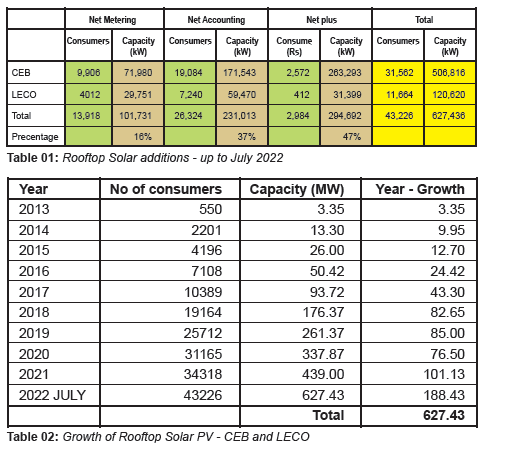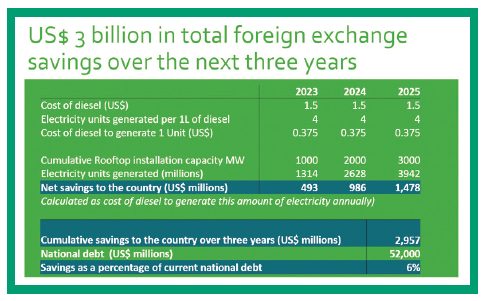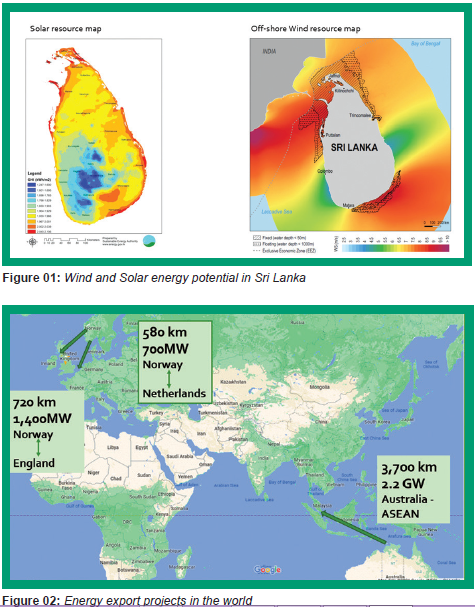Domestic Market
Compared to developing countries in the region, the per capita energy consumption in Sri Lanka is very low, at a mere 572kWh (2021 statistics). This is about 40% less than that of India, at 972kWh. Right now, Sri Lanka consumes 16,000 GWh of energy annually and it is anticipated that this volume will rise to 31,000 GWh by 2030. Our Renewable Energy commitments to the world under the ‘Paris Agreement’ is to ensure 70% of the annual requirement is met through Renewable Energy by 2030 and to reach the 100% target by 2050.
The Sri Lankan energy sector comprises 6,600,000 electricity consumer accounts of various customer types. Around 5,750,000 domestic consumers constitute the majority and account for approximately 40% of the total energy sold by the utility. Our consumer tariff was revised in 2016 and remained unchanged until last month despite the continuous increase in energy costs driven by high inflation rates and heavy expenditure for fossil fuels by the CEB.

Originally, Sri Lanka was a near 100% renewable energy dependent country, however, we ended up with a fossil fuel dependent national grid due to short-sighted policies. Today, Sri Lanka’s energy mix is usually 65:35 (Fossil Fuel based/ Renewables), although in a year with heavy rainfall, this could change to 50:50, which appears to be the case in 2022.
The main reason for soaring energy prices in Sri Lanka is the CEB’s continued negative approach to Renewable Energy. In 2016, the regulator, the Public Utilities Commission gave RED LIGHT warning on the possibility of power cuts in 2021/2022, unless the proposed power projects were completed in time. These project development proposals were ratified by the Power & Energy Ministry and were further approved by the Board of the CEB. Unfortunately, many of these proposals were not carried out by the CEB, resulting in the extensive daily power cuts experienced in 2022.
Since 2015, Solar energy is the only major energy source added to the National Grid, primarily in the form of Rooftop solar energy systems. Sri Lankan Prosumers (Producer-Consumers) have added 620MWs of Rooftop solar energy to the national grid since 2016. Table 1 shows the number of rooftop solar systems as at July 2022. Table 2 shows the steady growth in rooftop solar systems since the introduction of Net Accounting and Net Plus Schemes in 2016.
After a cumulative total of 50MWs in the first 4 years, the Rooftop Solar power system industry witnessed steep growth since the introduction of Net Accounting and Net Plus, resulting in 627MWs supplied to the grid by July 2022.
The CEB has over 5,750,000 domestic customers and only 43,000 of them are currently connected to Solar energy systems. If the Government takes the correct economic and environmental approach to start promoting Solar Rooftop systems, Sri Lanka could convert at least 20% of electricity customers to solar energy and save approximately US$ 3 billion to the country annually. This is around 6% of our National Debt – clearly indicating the significance of the potential savings.

Energy Exportation Economy
Sri Lanka has a massive balance of payment deficit every year, which widened this year due to the recent global economic and pandemic issues. The only way to address this problem is to find new ways of generating new export revenue. Renewable Energy exportation can be one such massive opportunity.
Sri Lanka has over 200GWs of identified renewable energy resources (Figure 1). Out of this 110GWs are Wind energy and the rest is Solar Energy. Our total renewable energy requirement for 2030 is only 9GWs and as the numbers indicate, there is significant potential to generate and export Renewable Energy to energy-hungry neighbouring countries.
The world is fast moving towards green energy and some countries that do not have renewable energy potential, have started buying Renewable Energy from countries as far as 3700kms away. A classic example is the project to evacuate Solar Energy from Darwin Australia through an HVDC undersea cable to Singapore. Furthermore, North Sea Link, the Renewable Energy transferring cable line between Norway and the UK, as well as NorNed, the line between Norway and the Netherlands, are already functional (Figure 02).

It is imperative that we move towards Renewables due to pressing environmental, social and economic reasons. Renewable Energy must be encouraged and must be made a sizable contributor to the national energy requirement and must not be evaluated in isolation. We are suffering today due to the stubborn attitude of the Utility that did not heed the advice of the regulator/cabinet and their own Board. Non-Renewable Energy friendly utilities do not have a place in the modern world. They will either have to join the movement towards rapid Renewable Energy development or be made to move out to make room for those who are willing and able to do so in the interests of the country. This choice is not in the hands of a few individuals but in the hands of 22 million Sri Lankans.
40-10
